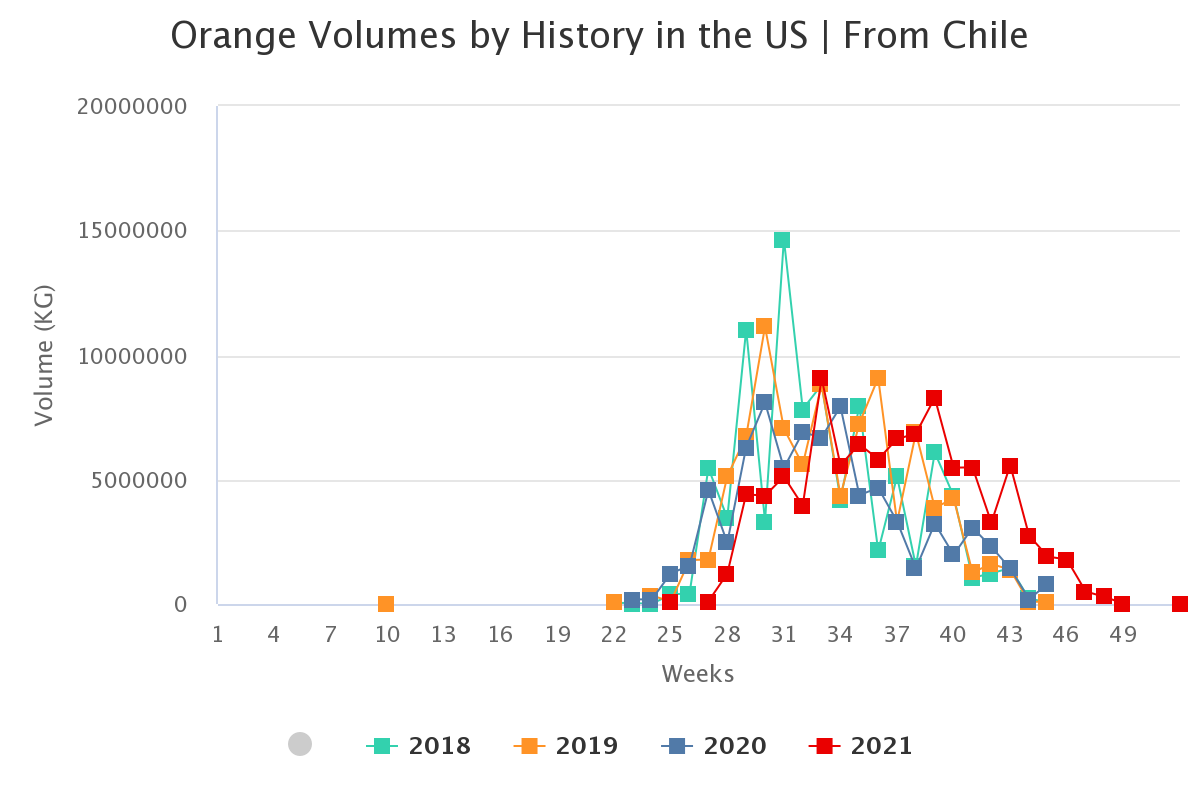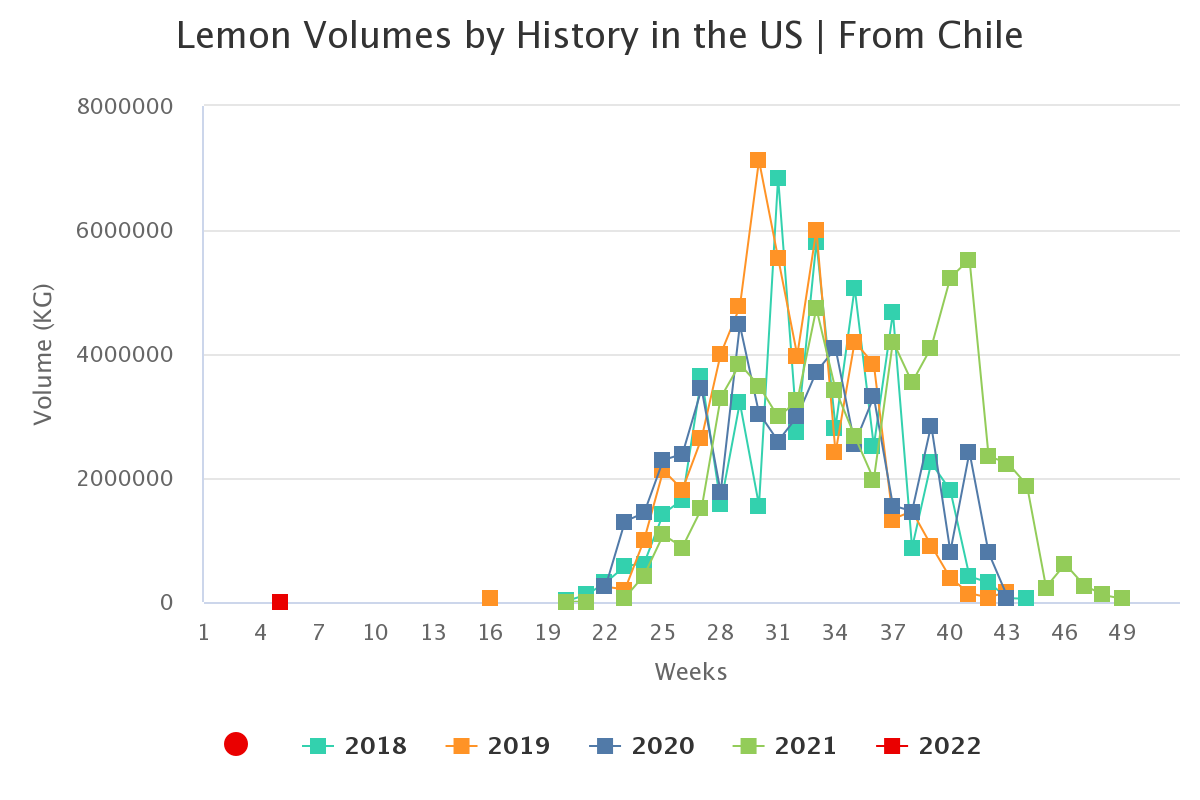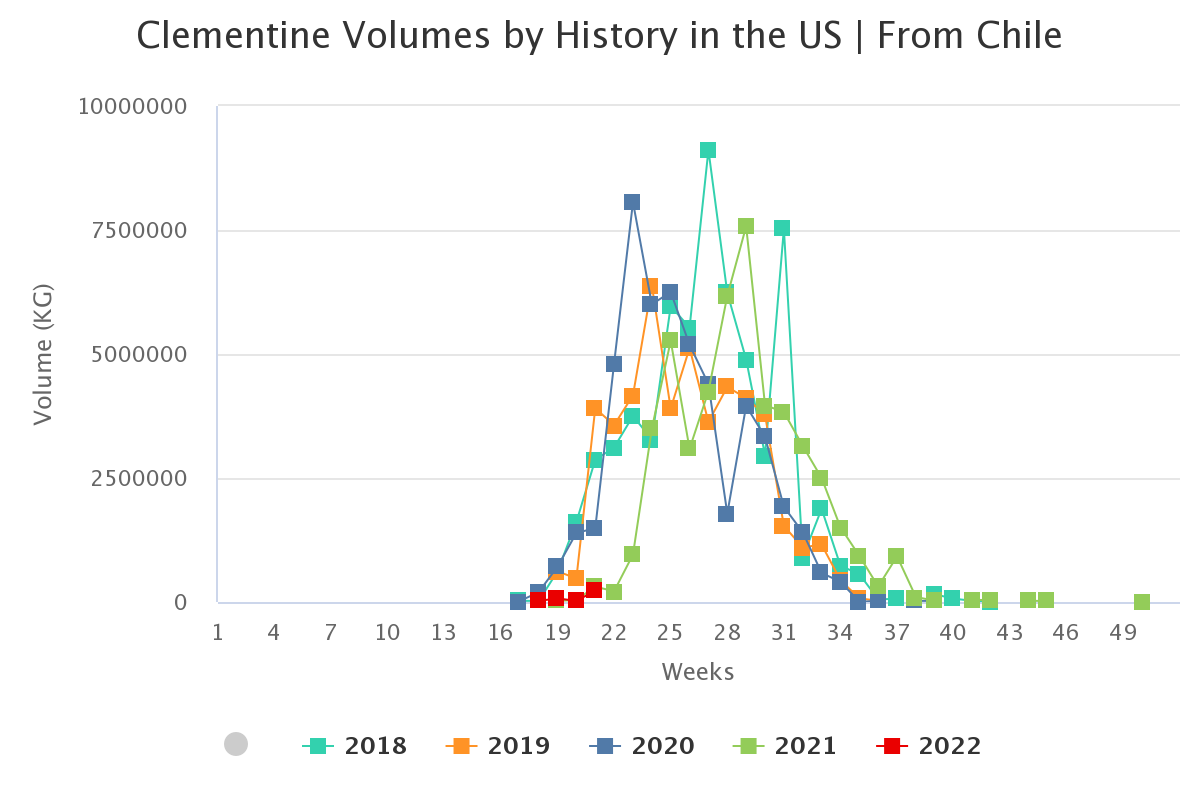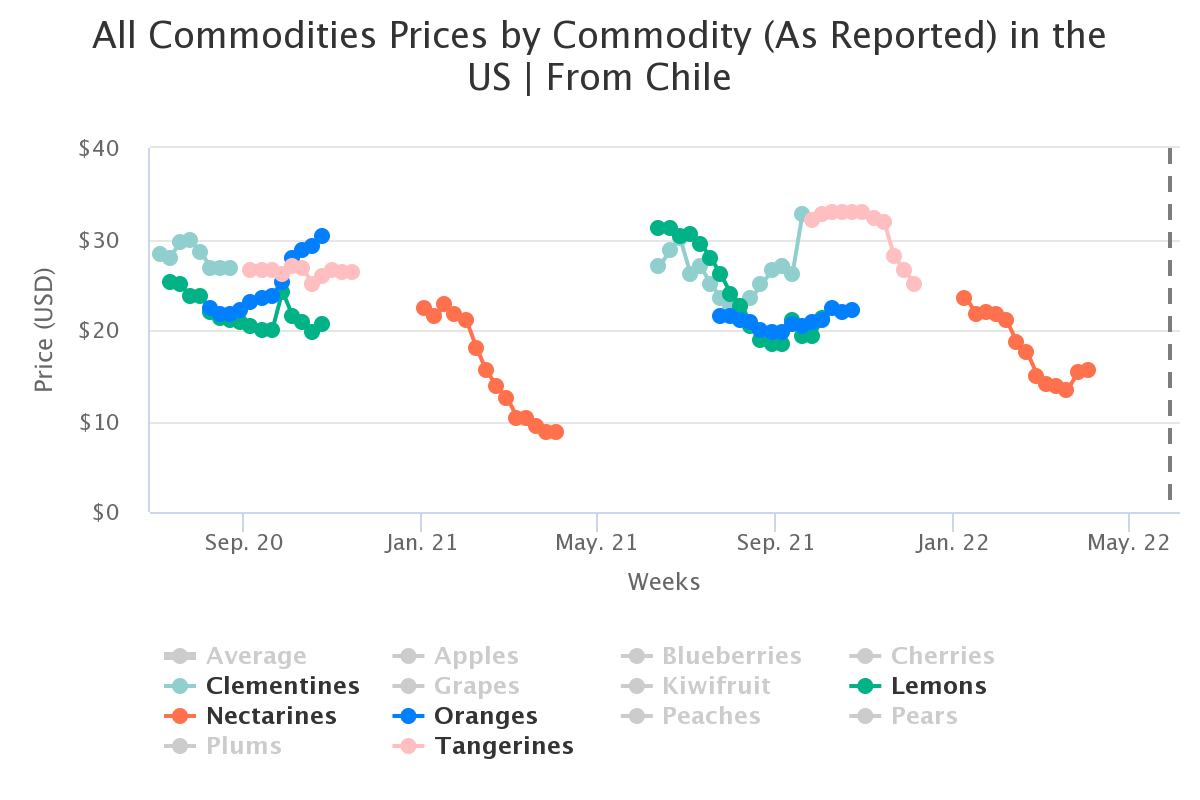Agronometrics in Charts: A shortfall in Chilean citrus volumes expected this season
In this installment of the ‘Agronometrics In Charts’ series, Sarah Ilyas studies the state of the Chilean citrus market. Each week the series looks at a different horticultural commodity, focusing on a specific origin or topic visualizing the market factors that are driving change.
The U.S. received 88% of all Chilean citrus exports in 2021, with 97% of clementines and mandarins shipped to the U.S. Volumes for citrus fruit from Chile will be lower this year, especially for clementines for which a decrease in volume of about 35% is expected. A combination of drought, restrictions imposed due to the pandemic and logistical constraints have led to a reduction in projected profits for Chilean citrus growers and exporters in the 2022 season. According to a statement, clementines are one of the most affected cultivars, with a projected export crop of 45,000 tons, a 35% drop compared to 2021. “In the specific case of oranges, this year there will be less fruit than last season, approximately 13% less, and we expect to reach 90,000 tons of exports. The fruit is looking very good, with good sizes and Brix degrees in line with what’s expected for this period,” says Monserrat Valenzuela, manager of the Chilean Citrus Committee.
“Oranges have stood their ground and Chile currently has some 6,300 hectares planted with orange trees, distributed between the IV and VI regions. Our export varieties are of the Navel type, although we also grow the Cara Cara, a very successful pink-fleshed variety, of which there are some 500 hectares in the country,” says Monserrat.
President of the Citrus Committee, Juan Enrique Ortúzar, projected that Chile would export a volume of 90,000 tons this season, which is equivalent to 11 percent less than the previous season. The citrus industry in Chile, however, has grown significantly in recent years with significant increases in the volumes shipped to international markets. In just about 6 years, between 2015 and 2021, Chilean orange exports went from 66,611 tons to 103,161 tons, increasing by 54.9%. Clementine shipments increased by 136%, while mandarin exports grew by 164%. These figures boosted total citrus exports by 93.12%, from the 205,852 tons recorded by the Citrus Committee in 2015 to 397,569 tons last year.

Source: USDA Market News via Agronometrics.
(Agronometrics users can view this chart with live updates here)

Source: USDA Market News via Agronometrics.
(Agronometrics users can view this chart with live updates here)

Source: USDA Market News via Agronometrics.
(Agronometrics users can view this chart with live updates here)
“The main destination market for Chilean oranges is the United States. Europe offers some very specific windows for Chile, and Asia, for now, is not yet such a strong market for our oranges. For Chile, China is still a very new market, opened only a couple of seasons ago, and this year we have been focusing our promotional efforts there on lemons. At a later time, when the logistical issues are solved, we do not rule out including oranges in the promotions,” said Monserrat.
“The North American market is also traditionally supplied from the southern hemisphere with oranges from South Africa and Australia, although this origin is much stronger in Southeast Asia and China, due to proximity. It is still too early to predict how the season will go and what the level of consumer demand will be. In recent years, COVID has given a great boost to the demand for citrus due to its vitamin C content, but we do not know how the demand will behave this year,” he added.

Source: USDA Market News via Agronometrics.
(Agronometrics users can view this chart with live updates here)
The Chilean Citrus Committee is setting up a rigorous marketing campaign that will help build demand and drive sales at the retail level so Chile can continue to export the majority of its produce to the US market. Retail promotions will be the major focus for the committee. According to Karen Brux, managing director at the Chilean Fresh Fruit Association, “This season, perhaps more than ever, it’s crucial that we work closely with the trade on flexible, targeted programs to drive sales. Having encountered numerous logistical issues over the past year, we’ve learned how to implement flexible programs that can be turned on and off quickly. The ability to be fast, nimble and creative will continue to be important during the Chilean citrus season.”
All pricing for domestic US produce represents the spot market at Shipping Point (i.e. packing house/climate controlled warehouse, etc.). For imported fruit, the pricing data represents the spot market at Port of Entry.
Written by: Sarah Ilyas






